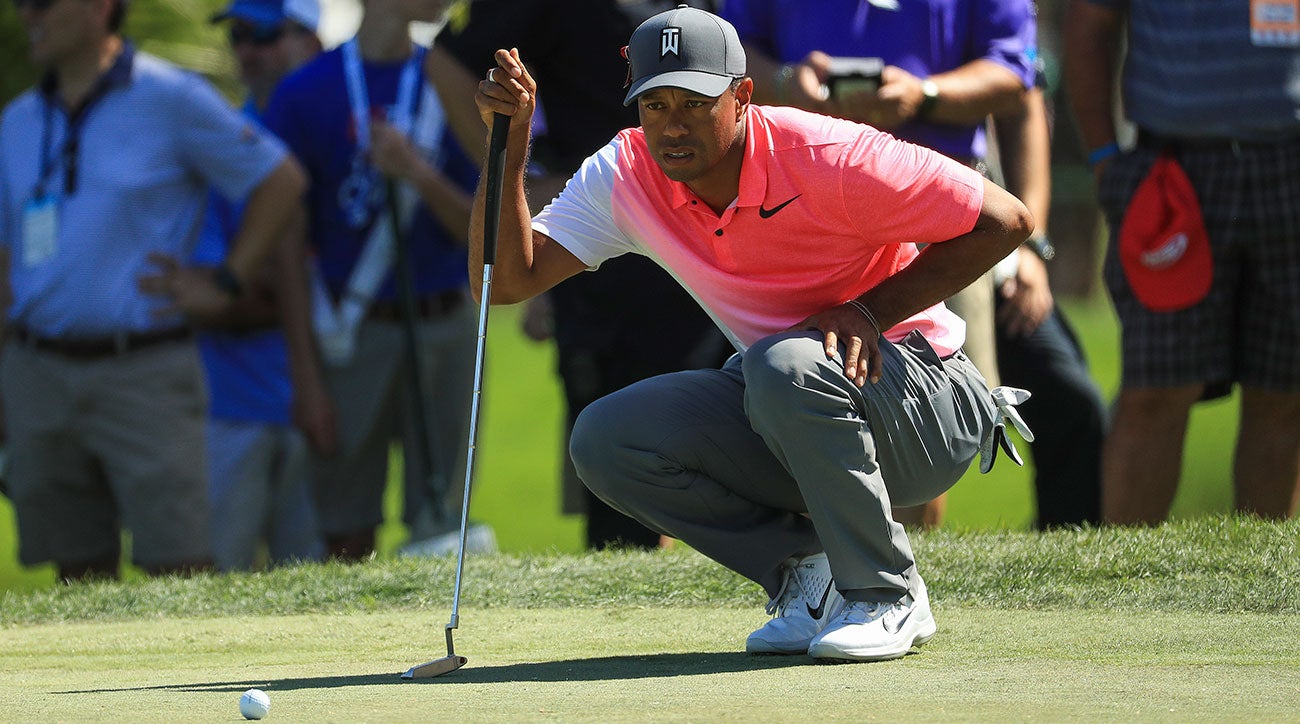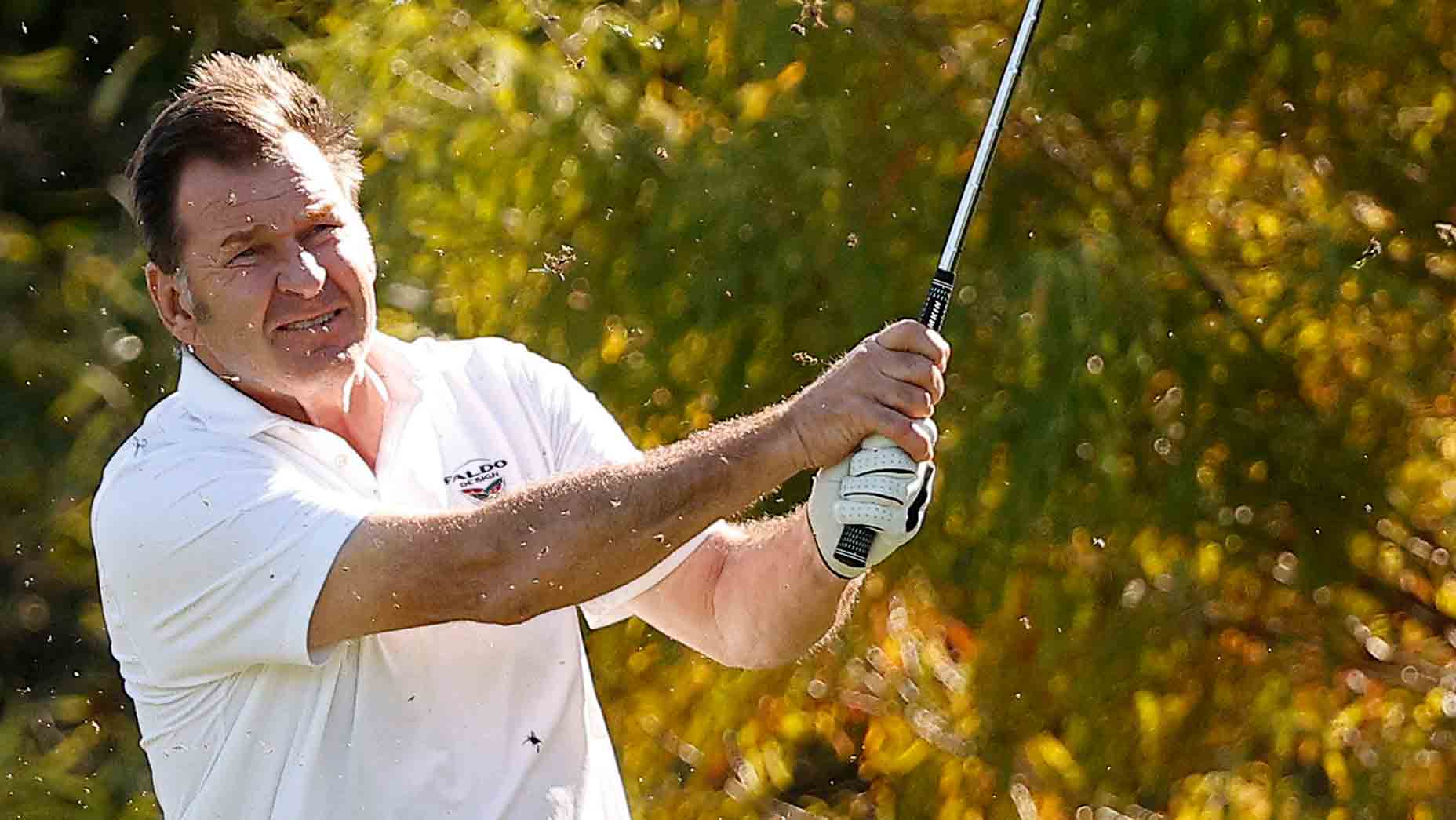PALM BEACH GARDENS, Fla. — Back in the day, to start with a Tigerism he doesn’t use much anymore, you’d look at the leader board halfway through this Honda Classic, see that Woods is trailing by “only” four and assume that he would take control of the tournament by Sunday night. That of course was then. We knew who he was, what he had done and what he would likely do. Golf was easy for him, then. In a way, this is more interesting. He was always a worker, always a grinder, but that masked what all the players knew. Golf was easy for him, back in the day. Now it’s not. This is new territory for all of us, for Tiger, for the other players, for you.
Back in the day, Tiger Woods would suck the life out of tournaments. It was all Tiger. The most extreme example of that phenomenon was at the 2000 U.S. Open at Pebble Beach, which he won by 15 shots. It was a sight to behold, one pure shot after another, with nary a practice swing. The whole thing was grooved and programed. He was taking over the national Open in a way nobody had ever even imagined was possible. It was exciting. Also very boring.
On a sun-drenched Friday afternoon at the Honda, Woods sucked the life out of this tournament in an altogether different way. Probably 90 percent of the walking spectators on the course were following Woods, not because he is dominant, not even because he was once dominant, but because he’s now a lot more like us: frail, flawed, trying to fit in. It’s poignant. It was only nine months ago that he was the subject of a gruesome Palm Beach County police mug shot. Here, a half-dozen or more uniformed police officers are walking inside the ropes with Woods.
On Friday, he had an erratic Jekyll-and-Hyde round of 71, one over par, after an opening round of 70. Anyone can see that he is four shots behind the co-leaders, Luke List and Jamie Lovemark. But at the halfway point, he was also only four shots from T-59, from the players who made the cut on the number.
One group in front of the Woods group (playing with Brandt Snedeker and Patton Kizzire) was the threesome of Sergio Garcia, Justin Thomas and Daniel Berger. One group behind the Woods game was Gary Woodland, Alex Noren and Tommy Fleetwood. We’re talking about six serious talents and recent winners. The Thomas group might have had two dozen walking spectators. The Fleetwood group had a sign boy. The Woods group was swelling as they followed Tiger, wearing a pink shirt. (Well, one pink sleeve, one white.) He was a picture and a magnet.
He’s earned his attention, and he’ll have more of it, far more, on the weekend, both from spectators and from CBS. Woods, as one family’s homemade T-shirts reminded fellow spectators, has won 79 Tour events including 14 major titles. The rest of the surviving field combined has 15 majors.
What Tiger Woods at 42 is trying to do — the comeback he is attempting with a stitched-together body and while tending to his complicated personal life — is more daunting than what he was trying to do at 21. Athletes are famously terrible at knowing when to call it a day. For every Ted Williams, who homered in his final at-bat and batted .316 in his final season, there’s a Willie Mays, missing fastballs he once would have clobbered by a foot and batting .211 in his final year.
Could Woods possibly win again? Or is he destined to do what he did here on Thursday and Friday, hit a bunch of vintage shots and others that were just plain terrible and piece together rounds that look ordinary on the card and extraordinary if you saw what he had to do to post them? How much patience will he have if golf never becomes easy for him again?
The course, the Champions course at PGA National, is difficult, the kind of course that was once easy for Woods to win on, because the harder courses will always identify superior talent. This Honda, especially in the wind, exposes weaknesses, and Woods’s are obvious. When his ball is on a tee and an iron is in his hands, Woods will make classic Woods swings. The cleared hips, the hard downswing, the piercing flight. (Well, he did splash his ironed tee shot on the par-3 15th on Friday, but the broad statement is true.) But with driver his swing looks different and less confident. He takes multiple practice swings, backs off the ball if he feels his alignment is off, and will hit shots that are crazily offline, both left and right. He was never the picture of accuracy with the driver, but nothing like this.
When he putts, he looks the same as ever, sure of himself, with a stroke you dream about. But now he seems to hit good putts that don’t go in, along with some that have no chance. It’s a different putting game. He did make a vintage Woods putt on the 11th hole on Friday, a 10-footer to save par that was nothing but net, a putt that never had any chance of not falling, perfect in speed and line. Woods has always said the par-savers are more of pick-me-up for him than birdie putts. His fist pump there was out of an old YouTube clip.
“It was a good grind out there,” Woods told Golf Channel when his Friday round was over. In fact, he said those words twice. Well, he was always a grinder, maybe the best grinder the game has ever seen. He’s shown that, for these two rounds in South Florida, anyhow, he still has the grinder mentality.
But he didn’t win that 2000 U.S. Open by 15 because of his ability to grind. He’s golf’s 79/14 man because he had magic in every one of his 14 clubs, magic and skill and strength and speed.
When he goes off on Saturday at 12:10 p.m. with Jason Dufner, don’t look for the return of TVGM (Tiger Woods Golf Magic.) It’s way too early for that. That magic might be gone forever. If he breaks par, that would be a minor step in a major direction. If he goes for a number, he’ll have to dig even deeper. Nobody in golf has done what he is trying to do. This is new.
Michael Bamberger may be reached at mbamberger0224@aol.com.






